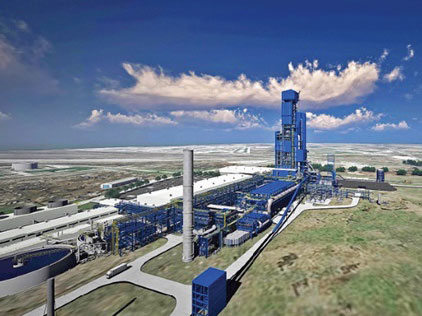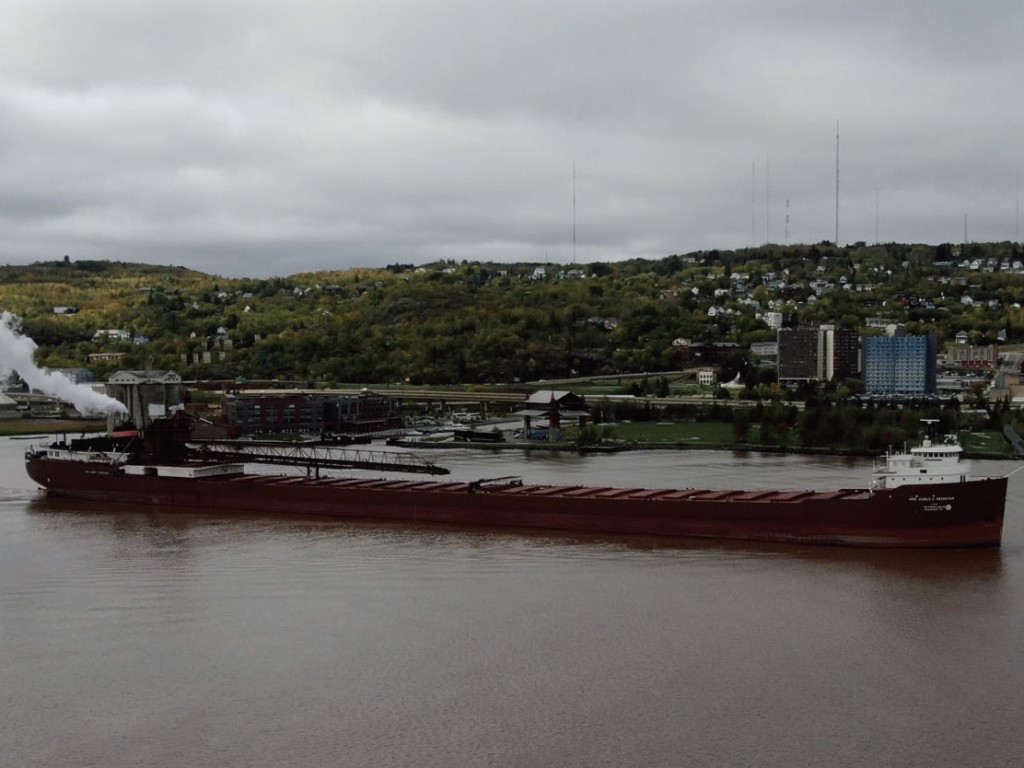Asphalt, cement and clinkers surge over 2020 numbers
The Great Lakes Seaway Partnership reported that American and Canadian ports in the Great Lakes-St. Lawrence Seaway System handled over 108,000 tons of asphalt from the opening of the St. Lawrence Seaway on March 22, 2021 through June 30, 2021, a 61 percent increase compared to shipments through June last year. Other commodities seeing an increase include cement, coke, scrap metal, general cargo and iron ore.
| Through June, all cargo shipped through the St. Lawrence Seaway | |||
|---|---|---|---|
| 2020 | 2021 | change (+/-) | |
| Total Transits* | 1,222 | 1,326 | +8.51% |
| Total Cargo* | 11,925,000 mt | 12,923,000 mt | +8.37% |
| * Combined U.S. and Canadian traffic (2020: Shipments from April 1 to June 30, 2020) (2021: Shipments from March 22 to June 30, 2021) | |||
Port of Cleveland
“The Port of Cleveland continues our year over year growth in tonnage numbers with a strong June,” said Dave Gutheil, Chief Commercial Officer, Port of Cleveland. “Our general cargo tonnage, which included a mix of containerized cargo, yachts, imported steel, and heavy machinery, grew by nearly 55% compared to our June 2020 numbers, and has increased by nearly 60% YTD compared to 2020. We will also soon be initiating an infrastructure project that will rebuild and modernize two of our most used docks. This $20 million project will occur in stages over the next 18 months with funds secured through federal, state, and local sources,” said Gutheil.
The Port of Cleveland’s bulk terminal, which handles iron ore and limestone, has also experienced substantial growth compared to last year. Cargo numbers have more than doubled at this facility, which can be attributed to strong demand in the steel sector, and the lengthening and upgrades to our ore tunnel. The result of this project now allows this terminal to mix different types of ore on demand upon delivery to the Cleveland Cliffs steel mill.

Port of Toledo
At the Port of Toledo, year to date tonnage was up 25% over the same period in 2020 exceeding 3.7 million tons. Increases in bulk commodity handling have led the way with iron ore shipments up nearly 45% due primarily to the Cleveland Cliffs hot briquetted iron facility going into full production this year. Other bulk products like salt, coal and petcoke were also up during the month of June. “When we think of exports, Toledo is known mainly for exporting corn and soybeans,” said Joe Cappel, Vice President of Business Development, Toledo-Lucas County Port Authority.
“This year we are also exporting other products to Europe and other locations like distillers dry grains and petcoke. It is always a great opportunity for carriers to have the ability to discharge bulk or general cargo in Toledo and also reload with grain or one of these other products that are in demand globally,” said Cappel.

Port of Duluth
More than 2.3 million short tons of iron ore transited the Port of Duluth-Superior in June, the most in a single month since August 2019 and the highest June-only iron ore tonnage total since June 2014. That robust float helped keep the port’s total tonnage 3.5 percent ahead of the five-season average and nearly 40 percent ahead of the 2020 pace through June 30.
Duluth-Superior’s total iron ore tonnage through June topped 7 million short tons, putting it 10 percent ahead of the five-season average. Coal and petcoke tonnage also continued to climb, nearing 900,000 short tons in June and 2.6 million short tons season-to-date.
“Steel demand remains strong and Minnesota’s Iron Range continues to operate at full production, which is a good thing for the state, the region and for the Port of Duluth-Superior,” said Deb DeLuca, Executive Director, Duluth Seaway Port Authority. “The total number of vessel arrivals in our port (243 through June 30) is up nearly 30 percent over last season, which is another positive indicator in what’s been a good shipping season thus far.”
| 2021 Great Lakes-St. Lawrence Seaway Key Commodity Trackers*** | |||
|---|---|---|---|
| 2020 | 2021 | change (+/-)** | |
| Grain* | 3,645,000 mt | 3,456,000 mt | -5.18% |
| Iron Ore* | 2,156,000 mt | 2,462,000 mt | +14.16% |
| Coal* | 669,000 mt | 666,000 mt | -0.43% |
| Cement & Clinkers* | 571,000 mt | 780,000 mt | +36.55% |
| Asphalt* | 67,000 mt | 108,000 mt | +60.98% |
| * Combined U.S. and Canadian traffic; ** Percentages rounded to nearest tenth *** All data is compared year-over-year (2020: Shipments from April 1 to June 30, 2020) (2021: Shipments from March 22 to June 30, 2021) | |||
Ports of Indiana- Burns Harbor
“The Ports of Indiana-Burns Harbor continues to see increased tonnage,” said Vanta E. Coda II, Chief Executive Officer, Ports of Indiana.
“Compared to June 2020, we’ve seen a 52 percent tonnage increase this June. Looking at all maritime tonnage, Burns Harbor has more than a 36 percent increase year-over-year to date. Steel is up more than 100 percent and limestone has climbed nearly 90 percent too. We look forward to additional growth in the second half of the year,” said Coda.





